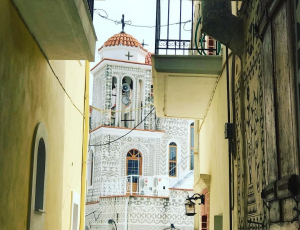LIFE & CULTURE
XpatAthens
Thursday, 14 April 2022 07:00
Traditional Orange Spoon Sweet
Spoon sweets are sweet preserves, served in a spoon as a gesture of hospitality and are a big deal here, in Greece. They can be made from almost any fruit, though sour and bitter fruits are usually preferred.
Check the below recipe for an easy-peasy recipe for a delicious orange spoon sweet that will excite your guests' palate!
Ingredients
2 kilos oranges
800 g granulated sugar
800 g water
1 tablespoon glucose
2 star anises
2 pods of cardamom
lemon juice of 1 lemon
To serve
strained yogurt
rosemary
Instructions
Check the below recipe for an easy-peasy recipe for a delicious orange spoon sweet that will excite your guests' palate!
Ingredients
2 kilos oranges
800 g granulated sugar
800 g water
1 tablespoon glucose
2 star anises
2 pods of cardamom
lemon juice of 1 lemon
To serve
strained yogurt
rosemary
Instructions
-
Remove the zest of the oranges and add it to a bowl. You can add 80 g brandy and 2 tablespoons sugar, and use it as orange extract. Store it in the refrigerator, sealed in a jar.
-
Cut the top and bottom ends of the oranges and then score the rind all around the orange. Carefully remove the peels, wrap them, and pierce them with a toothpick.
-
Transfer the peels to a pot with boiling water and boil for 5 minutes. Drain the water and follow the same process 1-2 more times, depending on the bitterness of the rind.
-
In the same pot add the sugar, the water, the glucose, the anise, the cardamom, the peels of the oranges, and transfer over low heat. Boil for 40-50 minutes.
-
Remove from the heat and add the lemon juice.
-
Let it cool well. The more the syrup is cooling down, the more it will thicken.
-
Serve with yogurt and rosemary. You can store it sealed airtight in a jar, in a cool and dry place.
Published in
Greek Food & Diet
Tagged under
Wednesday, 13 April 2022 07:00
Top Destinations For An Authentic Greek Easter
For Greeks, Easter is the most important religious holiday of the year, celebrated in different ways throughout the country.
If you’re looking for a great excuse to escape the city for a while and enjoy the traditions and local customs that accompany this solemn occasion, the below destinations make for an unforgettable Greek Easter!
Corfu
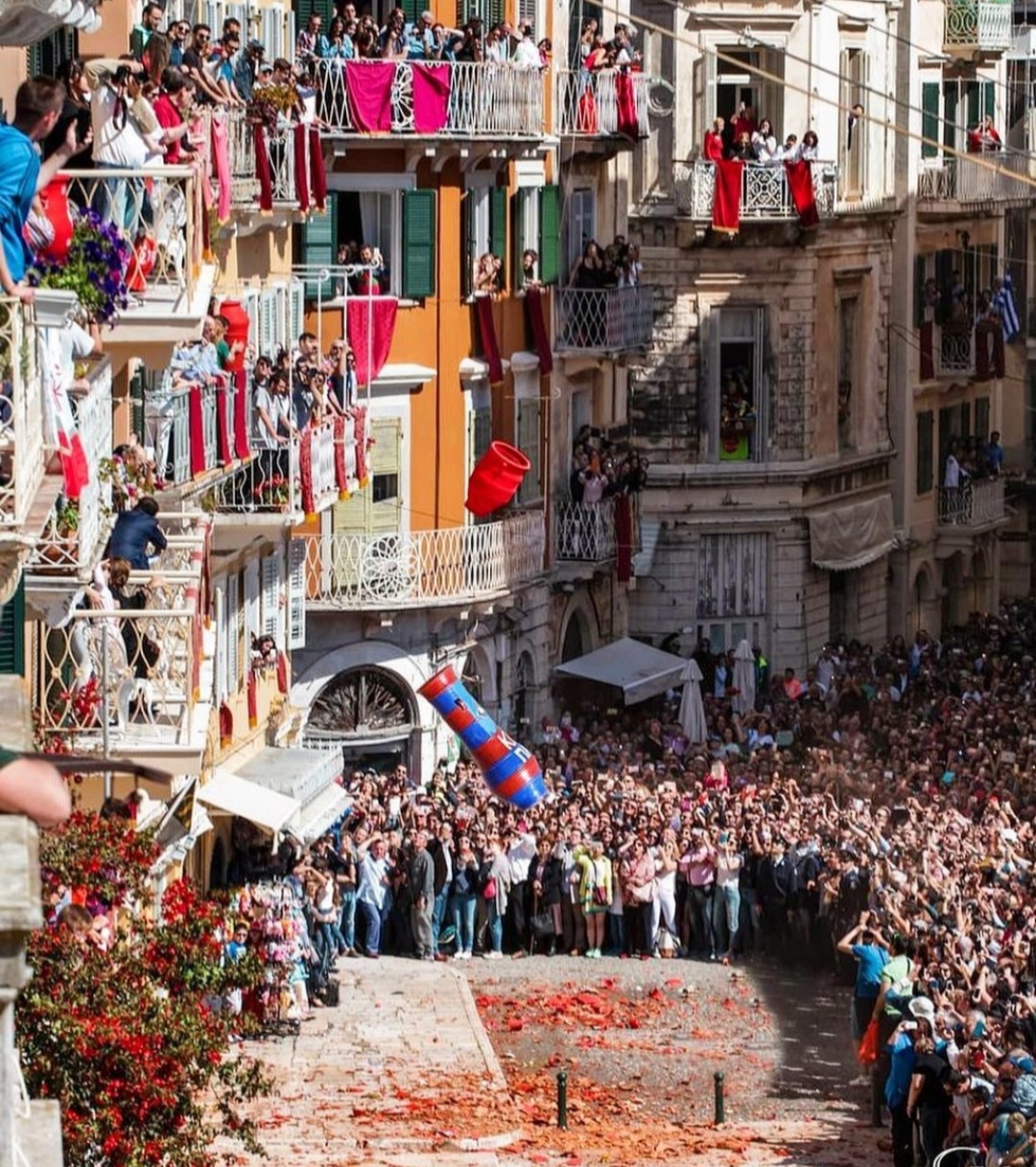
@giwrgoskatehis
Easter in Corfu is a one-of-a-kind experience that attracts hundreds of visitors every year. Corfu is home to an array of traditions and customs, some of which have Venetian influences. The most famous tradition is the throwing of the large jugs, known as botides. The botides are filled with water and thrown one by one from the balconies of Liston, a historic neighborhood in the island’s center.
Patmos
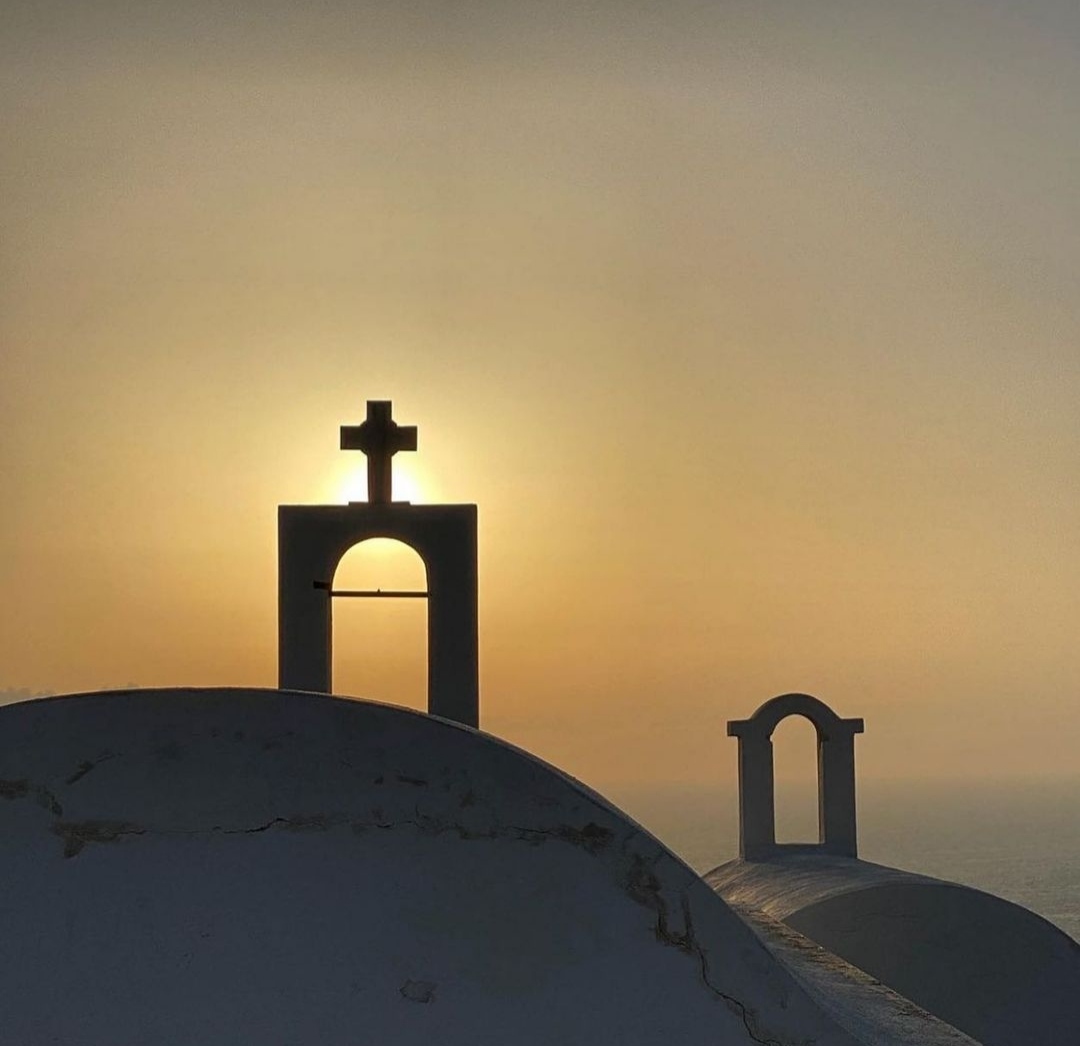
@lifeispatmos
If you’re looking for a great excuse to escape the city for a while and enjoy the traditions and local customs that accompany this solemn occasion, the below destinations make for an unforgettable Greek Easter!
Corfu

@giwrgoskatehis
Easter in Corfu is a one-of-a-kind experience that attracts hundreds of visitors every year. Corfu is home to an array of traditions and customs, some of which have Venetian influences. The most famous tradition is the throwing of the large jugs, known as botides. The botides are filled with water and thrown one by one from the balconies of Liston, a historic neighborhood in the island’s center.
Patmos

@lifeispatmos
Patmos, the island where John the Evangelist received the visions found in the Book of Revelation, is considered a sacred place and offers a truly unique Easter experience. Among the numerous century-old rituals and customs, the most famous traditions include the Washing of the Feet ceremony in Chora and the reading of the Gospel in seven languages in the Monastery of Saint John the Evangelist.
Chios

@trazeetravel
Except for the delicious mastic, Chios island is also famous for its lively Easter celebrations. Every year, in the village of Vrontados, a variation of the Greek custom of throwing fireworks after the Anastasi takes place, known as rouketopolemos or rocket war. Two rival church congregations engage in a rocket war, firing thousands of homemade rockets across town in an attempt to hit the bell tower of the other church.
Leonidio
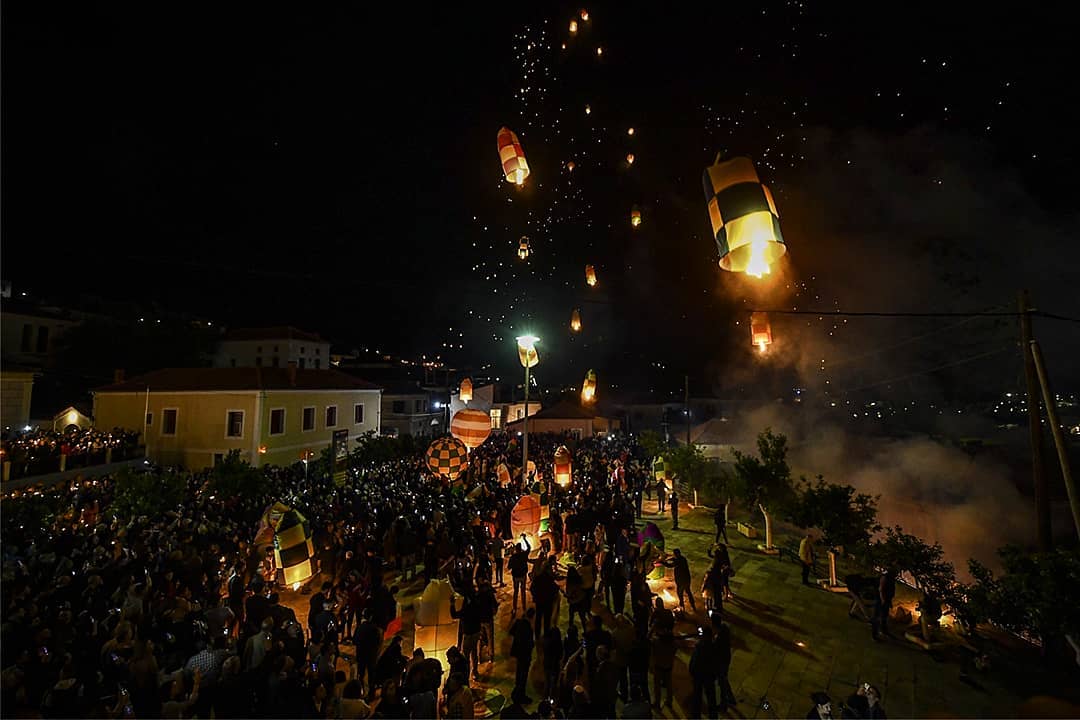
@aris.messinis
Leonidio is a historic town in Arcadia, in Eastern Peloponnese, and is an excellent destination to spend the Easter holidays away from the crowds. The most famous Easter tradition, dating back to the 19th century, is the colorful, homemade hot air balloons released by the villagers on the night of the Resurrection. An impressive spectacle to watch as the sky is filled with hundreds of twinkling lights resembling the stars.
Main image: 📸 @photobyosmansilahyurekli
Published in
Travel Greece
Tagged under
Tuesday, 12 April 2022 07:00
Sports Ancient Greeks Loved Competing In
The Ancient Greeks loved their sports, and for this obvious reason staged the first formal Olympic Games in 776 B.C., giving the world the idea of organized sports events as entertainment for arenas full of spectators and adoration for new heroes.
The Ancient Greeks were the first culture in which people idolized their favorite athletic superstars, to a level that even today’s most fanatical sports fans might find extreme.
The Ancient Greeks were the first culture in which people idolized their favorite athletic superstars, to a level that even today’s most fanatical sports fans might find extreme.
1. Horse Races
Kele, or riders competing on horseback, was added to the Olympics in 648 B.C., according to Miller’s book. The race was about 1.2 kilometers (approximately three-quarters of a mile) in length. The jockeys—who were young boys and probably slaves—rode bareback, without stirrups, though they did have reins and a whip to guide the horses.
Kele, or riders competing on horseback, was added to the Olympics in 648 B.C., according to Miller’s book. The race was about 1.2 kilometers (approximately three-quarters of a mile) in length. The jockeys—who were young boys and probably slaves—rode bareback, without stirrups, though they did have reins and a whip to guide the horses.
2. Running
The Greeks loved footraces, particularly the stadion, which was named after an ancient unit of measurement and corresponded to the 200-meter sprint in modern track, according to Stephen Gaylord Miller’s Ancient Greek Athletics. From 776 to 726 B.C., it was the only event at the Olympic Games. The Greeks later added the diaulos, the equivalent of today’s 400 meters event, as well as a distance event, the dolichos, which was between 7.5 and 9 kilometers—roughly similar to the 10K event that countless recreational runners now participate in each weekend. But the Greeks had one event that has no modern counterpart—the hoplitodromos, in which competitors emulated Greek infantry, and ran wearing helmets and bronze shin guards and carried shields.
3. Wrestling
In ancient Greek-style wrestling, grapplers fought in a standing position, with the object of throwing the opponent to the ground, according to Miller. The concept of pinning an adversary’s shoulders to the ground didn’t yet exist. Instead, wrestlers won a match by throwing an opponent three times. Another unique feature of the ancient event was that there were no weight classes, according to Lunt. The most fearsome wrestler of ancient times was Milos of Kroton, who in legend developed his great strength by lifting and carrying a newborn calf until it grew into a full-sized ox.
4. Pentathlon
The discus and javelin, to modern field events, date back to the ancient Greeks, but back then, they weren’t separate events. Instead, they were part of the pentathlon, a five-event combination that also included the long jump, running, and wrestling. The Greeks had lead or stone weights, called halteres, that some believe jumpers used in an effort to propel themselves further during the competition, though Lunt believes that the weights were only used in training.
To read this article in full, please visit: greekcitytimes.com
The Greeks loved footraces, particularly the stadion, which was named after an ancient unit of measurement and corresponded to the 200-meter sprint in modern track, according to Stephen Gaylord Miller’s Ancient Greek Athletics. From 776 to 726 B.C., it was the only event at the Olympic Games. The Greeks later added the diaulos, the equivalent of today’s 400 meters event, as well as a distance event, the dolichos, which was between 7.5 and 9 kilometers—roughly similar to the 10K event that countless recreational runners now participate in each weekend. But the Greeks had one event that has no modern counterpart—the hoplitodromos, in which competitors emulated Greek infantry, and ran wearing helmets and bronze shin guards and carried shields.
3. Wrestling
In ancient Greek-style wrestling, grapplers fought in a standing position, with the object of throwing the opponent to the ground, according to Miller. The concept of pinning an adversary’s shoulders to the ground didn’t yet exist. Instead, wrestlers won a match by throwing an opponent three times. Another unique feature of the ancient event was that there were no weight classes, according to Lunt. The most fearsome wrestler of ancient times was Milos of Kroton, who in legend developed his great strength by lifting and carrying a newborn calf until it grew into a full-sized ox.
4. Pentathlon
The discus and javelin, to modern field events, date back to the ancient Greeks, but back then, they weren’t separate events. Instead, they were part of the pentathlon, a five-event combination that also included the long jump, running, and wrestling. The Greeks had lead or stone weights, called halteres, that some believe jumpers used in an effort to propel themselves further during the competition, though Lunt believes that the weights were only used in training.
To read this article in full, please visit: greekcitytimes.com
Published in
Greek Philosophy & History
Tagged under
Monday, 11 April 2022 07:00
Hilarious Ancient Greek Beliefs & Traditions
Greeks are known to be philosophers and innovators. However, there is another side to the Greeks: the side where traditional beliefs, many of which are rooted in ancient times, overtake all sense of reason.
Here are some of the funniest and weirdest Ancient Greek beliefs and traditions!
1. Sneezing Prevents You From Getting Pregnant
This isn’t just some old wives’ tale, you see. Soranus, an ancient Greek physician, actually believed that women sneezing would act as a form of contraception, thus preventing pregnancy. After making love, he instructed women to squat, sneeze, and rinse.
2. Magical Sweat Was A Cure-All
Ancient Greeks admired their athletes and saw them as celebrities of a sort. Not only were they revered, but they were also thought to have magical sweat. How it worked: The athletes all performed naked and were rubbed with olive oil, and the sweat which they expelled during competitions was considered to have magical healing powers.
Slaves would scrape the sweaty skin of athletes after competitions. This sweat/oil mixture was called “gloios.” The gloios was in turn bottled and sold as an all-healing ointment for aches and pains.
3. There Is Evil In The Air
There is one ancient Greek superstition that is even now completely interwoven into the society of modern Greece. Generations upon generations have passed down the belief of the evil eye, or “mati.” There is evidence of the evil eye having an influence on the traditions of Greek society as far back as the 6th century BC when it commonly appeared on drinking vessels.
It is believed that someone can cast the evil eye onto another person out of envy (either good or bad) and jealousy. You are said to be hexed with the evil eye if you are dizzy or if you have a headache and yawn a lot. The good news is that you can have the “spell” broken by someone who knows how to perform a special ritual involving oil, water, and prayers.
4. The Island Of Mykonos Is A Breeding Ground For Vampires
Before the Age of Enlightenment in the 18th century, there were creatures endemic in Greek folklore who were considered to be dangerous. These “walking dead” creatures were called vrykolakes.
As the legend goes, vrykolakes would leave their graves at night and knock on the doors of their presumptive victims, saying their names aloud. If there was no answer after the first knock, no harm came to the innocent.
To read this article in full, please visit: greekreporter.com
Here are some of the funniest and weirdest Ancient Greek beliefs and traditions!
1. Sneezing Prevents You From Getting Pregnant
This isn’t just some old wives’ tale, you see. Soranus, an ancient Greek physician, actually believed that women sneezing would act as a form of contraception, thus preventing pregnancy. After making love, he instructed women to squat, sneeze, and rinse.
2. Magical Sweat Was A Cure-All
Ancient Greeks admired their athletes and saw them as celebrities of a sort. Not only were they revered, but they were also thought to have magical sweat. How it worked: The athletes all performed naked and were rubbed with olive oil, and the sweat which they expelled during competitions was considered to have magical healing powers.
Slaves would scrape the sweaty skin of athletes after competitions. This sweat/oil mixture was called “gloios.” The gloios was in turn bottled and sold as an all-healing ointment for aches and pains.
3. There Is Evil In The Air
There is one ancient Greek superstition that is even now completely interwoven into the society of modern Greece. Generations upon generations have passed down the belief of the evil eye, or “mati.” There is evidence of the evil eye having an influence on the traditions of Greek society as far back as the 6th century BC when it commonly appeared on drinking vessels.
It is believed that someone can cast the evil eye onto another person out of envy (either good or bad) and jealousy. You are said to be hexed with the evil eye if you are dizzy or if you have a headache and yawn a lot. The good news is that you can have the “spell” broken by someone who knows how to perform a special ritual involving oil, water, and prayers.
4. The Island Of Mykonos Is A Breeding Ground For Vampires
Before the Age of Enlightenment in the 18th century, there were creatures endemic in Greek folklore who were considered to be dangerous. These “walking dead” creatures were called vrykolakes.
As the legend goes, vrykolakes would leave their graves at night and knock on the doors of their presumptive victims, saying their names aloud. If there was no answer after the first knock, no harm came to the innocent.
To read this article in full, please visit: greekreporter.com
Published in
Greek Philosophy & History
Tagged under
Monday, 11 April 2022 07:00
5 Car-Free Greek Islands
For most people having to live without their car is rather challenging, but there are numerous benefits to leading a car-free lifestyle, even if it is only for a while. Think, for example, not having to worry about where to park or how to avoid a traffic jam. Especially, when you find yourself on an island where the road networks aren’t the best.
If you want to experience the stress-free feeling of moving from place to place with no other equipment aside from a comfortable pair of shoes, these 5 islands are ideal destinations for holidays without a car!
If you want to experience the stress-free feeling of moving from place to place with no other equipment aside from a comfortable pair of shoes, these 5 islands are ideal destinations for holidays without a car!
Hydra
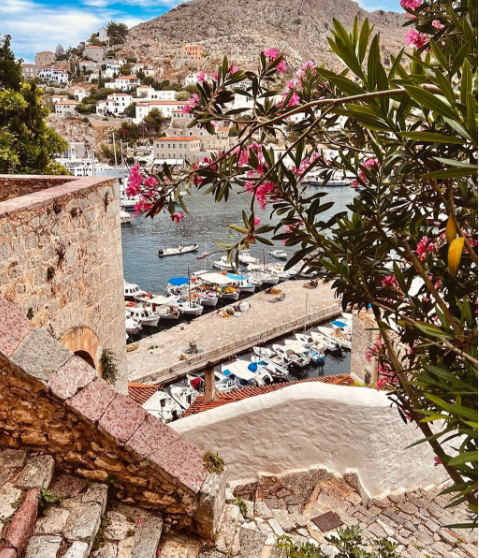
@ifigeniakrikeli

@ifigeniakrikeli
Located in the heart of the Argo Saronic Gulf, Hydra is one of the most cosmopolitan and affluent islands of Greece, and since it’s very close to Athens, it is a great weekend destination. The island is rich in history and archaeological interest and has managed to retain its traditional charm. Cars and motorcycles aren’t allowed there, and the best way to explore its cobblestone streets is on foot!
Kalamos Island
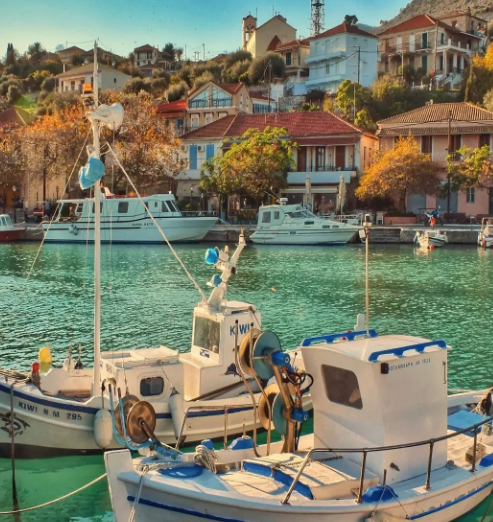
@anthedarma

@anthedarma
Located east of Lefkada, Kalamos may not be the typical Greek destination you see on postcards, but it sure is the ideal choice if you are looking for the authentic Greek way of living. It is a tall mountain range that floats on the sea, its northern side overgrowing with towering, thick pine trees and its coast lined up with numerous pebbly coves, often accessible only by sea. You don’t need a car to explore the island, and the few cars you may come across are mainly used for transporting goods.
Donousa
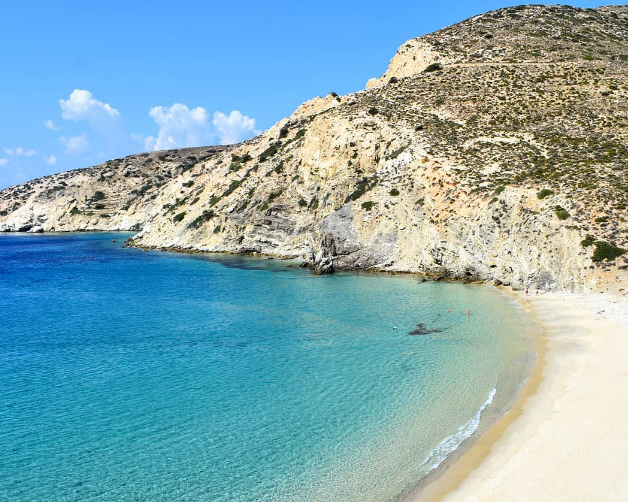
@cecile433
The northernmost island of the Small Eastern Cyclades, Donousa is located east of the island of Naxos. With an area of just thirteen square kilometers, you can walk around it on foot and discover not only its lovely beaches with crystalline waters but also its hiking trails. Some beaches are accessible only by boat, while the island has two taxis.
Donousa

@cecile433
The northernmost island of the Small Eastern Cyclades, Donousa is located east of the island of Naxos. With an area of just thirteen square kilometers, you can walk around it on foot and discover not only its lovely beaches with crystalline waters but also its hiking trails. Some beaches are accessible only by boat, while the island has two taxis.
Kastelorizo
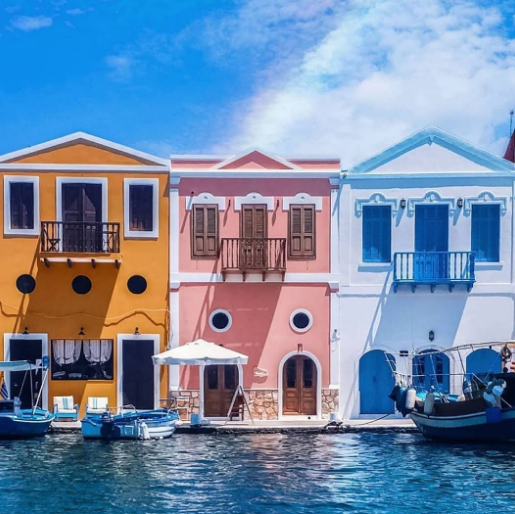
@my_greek_vacation

@my_greek_vacation
On the easternmost edge of Greece lies one of the smallest and most charming islands of the Dodecanese complex, Kastellorizo. Except for the one taxi on the island, it is otherwise a peaceful, car-free oasis with a rich history dating back to the early Neolithic era. The Castle of the Knights of Saint John on the reddish rock above the port is one of the island’s must-see attractions.
Leipsoi
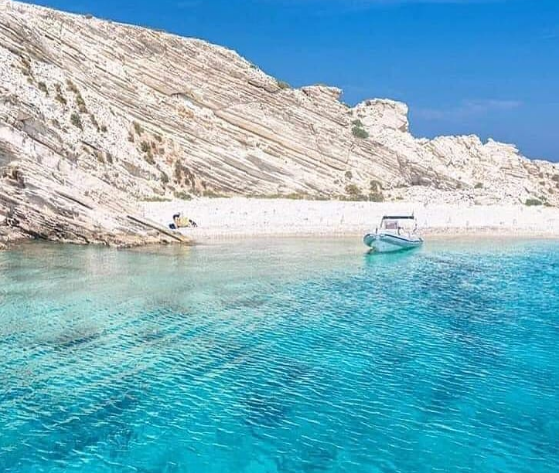
@stef_greece
Leipsoi

@stef_greece
Leipsoi is a small cluster of islets in the northern part of the Dodecanese famous for its relaxed atmosphere and its magical beaches, making it a perfect destination for laid-back holidays. Distances are short, so you don’t need a car, but you can rent a motorbike or hop on a bus or minibus if you don’t like walking.
Published in
Travel Greece
Tagged under
Wednesday, 06 April 2022 13:13
10 Years Navarino Challenge
The best wellness event in Europe and second in the world, Navarino Challenge, returns with its key message “sports unites people”, bringing all people together, without discrimination while celebrating with them its 10 years of presence through sports, tourism and the history of Messinia.
Amateur and professional athletes from Greece and abroad will participate in the celebration of sports tourism that will be held on October 21-23, 2022, at Costa Navarino and Pylos.
More than 30 sports activities, with the presence of Olympic athletes alongside amateur athletes of all ages and abilities, compose this year’s Navarino Challenge, which now bears its new, 10-year anniversary logo.
Enjoy here the teaser video of Navarino Challenge 2022.
Running in the magical Voidokilia - Register now
The participants will have the opportunity to run again this year crossing the dreamy beach of Voidokilia, with the Greek-American ultramarathon runner Konstantinos Dean Karnazes. The remarkable athlete will visit our country this year with his entire family and as a leading ambassador will strengthen for another year the participation of the Greek-American community that began 10 years ago.
Runners can secure their participation from now on and take advantage of the early bird prices, by completing the available form through the following link.
Honored guests from 2013 until today
Since 2013, the year that Navarino Challenge started, the event has honored great sports personalities who will be present again this year such as Panagiotis Giannakis, Konstantinos Dean Karnazes, Periklis Iakovakis, Alexandros Nikolaidis, Michalis Triantafyllidis and Dimitris Theodorakakos.
One of this year’s honorees will be the European champion and 11-time triathlon champion in Greece Grigoris Souvatzoglou.
The new ambassadors of Navarino Challenge
Navarino Challenge brings new personalities to its 10th anniversary. The Navarino Challenge team is strengthened with:
- Christina Flampouri, the only Greek woman who has conquered the 7 highest peaks in the world, who will be responsible for the indoor climbing activity
- and Georgia Kaltsi, the great wheelchair, basketball and fencing athlete
Navarino Challenge at the top of the 2022 Sports Marketing Awards
The award-winning sports tourism event Navarino Challenge excelled for another year at the Sports Marketing Awards, the institution that highlights the “champions” of Sports Marketing in Greece, receiving a total of 7 awards. More specifically, the event received 3 Gold Awards in the “Most Innovative Use of Content Creators & Influencers”, “Running & Live Well” and “Best Native Advertising Campaign” categories, 3 Silver Awards in the “Sports Tourism”, “Best Strategy for Branding” and “Kids / Youth / Grassroots” categories, as well as 1 Bronze Award in the “Best New Sponsorship” category for the sponsorship of Nestle Fitness, proving its steady upward trend, credibility and innovation as an event in the field of sports and tourism.
Accolade in the #BeactiveHellas program among 700 events
Navarino Challenge, which highlights the authentic values of the sports ideal, with activities that promote the Olympic spirit and participation of people of all ages, while educating young people alongside model athletes and Olympians, was distinguished among more than 700 events from the #BeactiveHellas program of the European Commission which is held under the auspices of the General Secretariat of Sports.
Costa Navarino and The Westin Resort Costa Navarino are the Official Hospitality Sponsors.
Navarino Challenge will take place under the auspices of the Ministry of Tourism, whose mission is the formulation of the tourism policy and the executive planning of the tourist development of Greece.
The event is organized by ActiveMedia Group which is also responsible for the event’s Sports Production.
Photo credit: Navarino Challenge
Published in
Local News
Tagged under
Wednesday, 06 April 2022 07:00
United Airlines Resumes Seasonal Service Between Athens & New York
United Airlines resumed its daily nonstop seasonal service between Athens International Airport (AIA) and New York/Newark.
Flight UA125 departs Athens Airport daily at 12:15 pm, arriving at Newark Liberty International Airport at 4:15 pm the same day. The return flight, UA124, departs Newark daily at 5:15 pm, arriving in Athens at 10:10 am the following day (all times local).
United’s service from Athens to New York/Newark is currently operated with Boeing 767-400 aircraft and as of May 7, the route will be operated with Boeing 787-10 Dreamliner aircraft.
The service is planned to operate until October 29 and will be joined next month by United’s daily nonstop seasonal service from Athens to Washington D.C., set to start on May 7.
Seasonal service between Athens and Washington D.C.
Flight UA983 will depart Athens daily at 11:50 am, arriving at Washington Dulles at 3:15 pm the same day. The return flight, UA982, will depart Washington daily at 5:10 pm, arriving in Athens at 9:55 am the following day (all times local).
United’s service from Athens to Washington Dulles will be operated with Boeing 787-8 Dreamliner aircraft.
To read this article in full, please visit: news.gtp.gr
Flight UA125 departs Athens Airport daily at 12:15 pm, arriving at Newark Liberty International Airport at 4:15 pm the same day. The return flight, UA124, departs Newark daily at 5:15 pm, arriving in Athens at 10:10 am the following day (all times local).
United’s service from Athens to New York/Newark is currently operated with Boeing 767-400 aircraft and as of May 7, the route will be operated with Boeing 787-10 Dreamliner aircraft.
The service is planned to operate until October 29 and will be joined next month by United’s daily nonstop seasonal service from Athens to Washington D.C., set to start on May 7.
Seasonal service between Athens and Washington D.C.
Flight UA983 will depart Athens daily at 11:50 am, arriving at Washington Dulles at 3:15 pm the same day. The return flight, UA982, will depart Washington daily at 5:10 pm, arriving in Athens at 9:55 am the following day (all times local).
United’s service from Athens to Washington Dulles will be operated with Boeing 787-8 Dreamliner aircraft.
To read this article in full, please visit: news.gtp.gr
Published in
International Travel
Tagged under
Wednesday, 06 April 2022 07:00
Great Video Games With An Educational Value
One of the most common concerns parents have is whether their children spend too much time surfing the net, mindlessly scrolling on social media, watching YouTube videos for hours on end, or playing video games. Indeed, the misuse of technology can have negative effects, but moderate internet use is unlikely to do any harm, while it may also appear to have some benefits.
If you know where to look, you can find video games that are useful for children. Such video games help children develop specific skills, enhance their creativity, teach concepts such as fair play and competition, inspire interest in learning, and can bring parents closer to their children if the parents themselves decide to be part of the game process.
Minecraft
Minecraft is a building game that allows players to go on adventures, raise resources, and create tools. The game has different modes - survival, creativity, adventure, and multiplayer - so players have flexibility on how to approach it. Creative freedom and self-direction are not the only things the game offers. Minecraft teaches teamwork and motivation, while it can improve reading and math skills.
National Geographic Challenge
The National Geographic Challenge is a quiz game for the whole family. The game has a fairly wide range of low, medium, and high difficulty questions that cover different regions - North America, Europe, Asia, South America, Africa, and Australia. Start the game by selecting an avatar, and then you can try to answer 40, 60, or 80 of the game's timed questions. During the game, children will have the opportunity to see stunning photos and videos from the National Geographic archive.
Nancy Drew Interactive Mysteries
This game allows children to play as Nancy and become amateur detectives who solve mysteries. They will interrogate suspects, solve puzzles, and discover clues until they finally catch the culprit. Through play, children learn without even realizing it. They learn about historical figures, discover different cultures, and develop critical thinking and problem-solving skills.
World Rescue
Developed by ZU Digital in collaboration with UNESCO, the game takes place in Kenya, Norway, Brazil, India, and China. There, children are asked to help five heroes solve problems such as diseases, deforestation, drought, and pollution. In addition to geography, children learn concepts such as sustainability and activism while being informed about global problems and how they can be solved.
Published in
Kids Life
Tagged under
Friday, 03 November 2023 07:00
The Best-Kept Secret Of Acropolis
The Acropolis of Athens naturally sends eyes skyward to take in the glories of the Parthenon and other buildings atop it, but its best-kept secret is a chamber inside the sacred rock.
The secret chamber of the Acropolis is actually a Byzantine church. Restored in 2017, the Acropolis, once a place of worship, burrows deep into the base of Athens’ most renowned mountain. Above the Dionysus Theater, is the church called Panagia Spilotissa, or the Virgin Mary of the Cave, which was converted from an archaic temple.
Ironically, the church originated as a temple to celebrate the ancient Greek god of festivity and religious madness. Dating back to 320 BC, the cave was a temple dedicated to Dionysus, built by Thrasyllos. Two Ionian pillars still stand on top of the entryway, easily spotted from the pedestrian walkway, the Dionysios Areopagitis, that borders the Acropolis.
Acropolis’ Secret: First an Archaic Monument, Then an Alternative Church
The monument was erected to celebrate Thrasyllos’ victory as the benefactor of a chorus that performed in the annual dramatic festival that honored Dionysus. After the victory, Thrasyllos had the monument constructed. It was again modified in 297 BC, following his son, Thrasyklis, victory to include inscriptions.
The cave was most likely considered sacred long before the construction of the monument. It may have been dedicated to Artemis, the goddess of the hunt. The rock face was cut back to form a flat vertical surface, and the mouth of the cave was enlarged into a rectangular opening. Two broad stone steps led up to the entry.
A Doric marble portico was set at the front of the cave, in imitation of the Propylaea, on the southwest wing of the Acropolis. The structure would have been surmounted with three bronze tripods that served as the actual prizes in the annual competition that involved drama, comedy, and musical performances. The tripods were eventually replaced with a statue of Dionysus.
Best-Preserved Examples of post-Byzantine Hagiography
“The fresco decoration of Panagia Spiliotissa comprises the best-preserved examples of post-Byzantine hagiography in the area of the Acropolis and its slopes,” according to Dr. Konstantinos Boletis. Boletis serves as a restoration architect for the Department/Ephorate of Antiquities of the City of Athens.
The church was one of the “alternative” places to worship that began to emerge in Athens during the sixth century following the decrees sent down by the Byzantine emperors.
To read this article in full, please visit: greekreporter.com
The secret chamber of the Acropolis is actually a Byzantine church. Restored in 2017, the Acropolis, once a place of worship, burrows deep into the base of Athens’ most renowned mountain. Above the Dionysus Theater, is the church called Panagia Spilotissa, or the Virgin Mary of the Cave, which was converted from an archaic temple.
Ironically, the church originated as a temple to celebrate the ancient Greek god of festivity and religious madness. Dating back to 320 BC, the cave was a temple dedicated to Dionysus, built by Thrasyllos. Two Ionian pillars still stand on top of the entryway, easily spotted from the pedestrian walkway, the Dionysios Areopagitis, that borders the Acropolis.
Acropolis’ Secret: First an Archaic Monument, Then an Alternative Church
The monument was erected to celebrate Thrasyllos’ victory as the benefactor of a chorus that performed in the annual dramatic festival that honored Dionysus. After the victory, Thrasyllos had the monument constructed. It was again modified in 297 BC, following his son, Thrasyklis, victory to include inscriptions.
The cave was most likely considered sacred long before the construction of the monument. It may have been dedicated to Artemis, the goddess of the hunt. The rock face was cut back to form a flat vertical surface, and the mouth of the cave was enlarged into a rectangular opening. Two broad stone steps led up to the entry.
A Doric marble portico was set at the front of the cave, in imitation of the Propylaea, on the southwest wing of the Acropolis. The structure would have been surmounted with three bronze tripods that served as the actual prizes in the annual competition that involved drama, comedy, and musical performances. The tripods were eventually replaced with a statue of Dionysus.
Best-Preserved Examples of post-Byzantine Hagiography
“The fresco decoration of Panagia Spiliotissa comprises the best-preserved examples of post-Byzantine hagiography in the area of the Acropolis and its slopes,” according to Dr. Konstantinos Boletis. Boletis serves as a restoration architect for the Department/Ephorate of Antiquities of the City of Athens.
The church was one of the “alternative” places to worship that began to emerge in Athens during the sixth century following the decrees sent down by the Byzantine emperors.
To read this article in full, please visit: greekreporter.com
Published in
Greek Philosophy & History
Tagged under
Monday, 04 April 2022 07:00
South Korea’s Greek Mythology MuseumYou Never Knew Existed
Although we know Greek history and mythology is loved all over the world, probably not many would guess that a Greek Mythology Museum exists in South Korea. What makes this museum all the more interesting is that it’s not even on the Korean mainland, but on the holiday destination of Jeju Island.
The museum itself is modeled after classical Greek architecture, featuring a row of columns outside and replicas of ancient Greek statues and famous paintings depicting scenes from Greek mythology.
The impressive museum is divided into seven large galleries that are all focused on one aspect of Greek mythology, such as the “Olympus Galley,” the “Love Gallery,” and the “Hero Gallery.”
Each gallery features spectacular white-plaster replicas of imposing ancient sculptures, as well as information regarding Greek mythology and history in both Korean and English.
It even features a replica of an ancient Greek village that visitors can explore, as well as historically accurate costumes they can wear, which help to transport them through time back to ancient Greece.
In the “Olympus Gallery,” replicas of famous ancient Greek sculptures of the gods line the room, along with copies of famous paintings depicting stories from Greek myth. Visitors can learn about each of the twelve gods and admire the artwork displayed in the museum.
The site is also home to a number of replicas of important items from Greek mythology, such as the Trojan Horse, albeit on a smaller scale. The museum also features interactive displays about zodiac signs and the constellations and even explains the Greek myths behind many of the constellations.
To read this article in full, please visit: greekcitytimes.com
The museum itself is modeled after classical Greek architecture, featuring a row of columns outside and replicas of ancient Greek statues and famous paintings depicting scenes from Greek mythology.
The impressive museum is divided into seven large galleries that are all focused on one aspect of Greek mythology, such as the “Olympus Galley,” the “Love Gallery,” and the “Hero Gallery.”
Each gallery features spectacular white-plaster replicas of imposing ancient sculptures, as well as information regarding Greek mythology and history in both Korean and English.
It even features a replica of an ancient Greek village that visitors can explore, as well as historically accurate costumes they can wear, which help to transport them through time back to ancient Greece.
In the “Olympus Gallery,” replicas of famous ancient Greek sculptures of the gods line the room, along with copies of famous paintings depicting stories from Greek myth. Visitors can learn about each of the twelve gods and admire the artwork displayed in the museum.
The site is also home to a number of replicas of important items from Greek mythology, such as the Trojan Horse, albeit on a smaller scale. The museum also features interactive displays about zodiac signs and the constellations and even explains the Greek myths behind many of the constellations.
To read this article in full, please visit: greekcitytimes.com
Published in
International Travel
Tagged under


